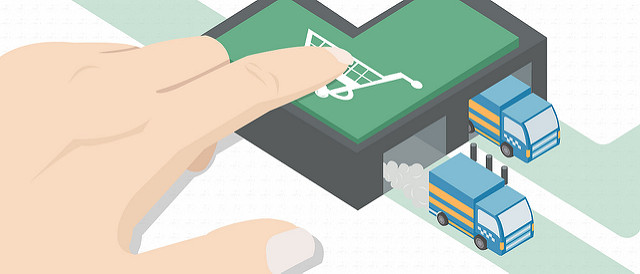The way parcel shippers manage their shipment and returns could really change the game for small businesses.
Customer demands are ever-rising, similar to the pace, quality, and automation offered by some of the big retailers on the marketplace. To make things worse for shippers, order fulfillment has also been at the forefront in the E-commerce business, where competition is high and customers expect greater transparency in the supply chain of their retailers.
There are several steps your business needs to take if you want to increase your delivery capacity or streamline your existing shipping strategy.

Start from the ground up
The best way to start building an effective shipping strategy is by looking at your supply chain in detail. You need to consider your weak links and how your approach prevents you from generating the revenue that you forecasted for your business. This happens by looking at your parcel data is throughout the entire supply chain and finding ways to improve this visibility, so that you can optimize these areas that have the highest impact on your operations and returns. At this stage is also important to make a thorough market comparison study and see where your competition outscored you. For instance, what is the quickest you ship a parcel from point to point, how often do you process these requests and in what ways do competitors manage to do it quicker than you?
What are your shipping costs?
Fast and quality delivery services go hand in hand with costs and cost-effectiveness. Small businesses can improve their strategy significantly if they have a very good estimate of their shipping costs, the calculation of which is based on destinations you service, shipping volumes, average parcel sizes, and types of services provided. As you all know, these all may vary greatly from one business to another and the approach that works best for all stakeholders.
The best advice we can give to you as a delivery business is that finding the right service for the right customer request is the cornerstone to designing a cost-effective shipping approach.

By narrowing your supply chain investigation and figuring out many different rates for various parcels dimensions, weights, common destinations, and rate of shipping per speed of delivery, a business can achieve much better visibility over the critical links in their supply chain. This process will certainly help you reevaluate your current approach and drive you to look for more effective and affordable alternatives serving your needs as a business.
How do you manage your returns?
This is another key step in your delivery optimization strategy. A survey by ShipStation revealed that customers, who were given access to their return portal, increased their order volume by 16% and nearly 30% of these customers agreed that they would like to shop from them again in the future. Offering returns may seem a little too time-consuming, but often, businesses gain better trust and transparency in their business by trying this approach, rather than generate a loss of income. Giving your customers the choice to replace or refund an item is certainly a good way to attract new customers and gain greater brand exposure in the early stages.

How much to charge them?
After you have looked at your entire supply chain, found your shortcomings, and estimated your costs, the next thing you need to do is plan your shipping charges. In order to stay competitive as a small business, you need to find the right balance between cost, speed, and quality of delivery. That unfortunately is a hefty challenge and a dealbreaker for a lot of companies of any size and from any background. It’s always useful to know what your customers expect from your delivery in terms of speed and cost rates. Depending on your marketplace. customers may well be happy to pay extra and receive expedite shipping, or go for the free delivery option instead and not mind longer waiting times. There’s also a third option, which is a flat rate shipping solution based on the destination, item size, and other parcel variables. One way or another, you should be able to recognize the needs of your customers on the spot and cater to those needs if you want to stay competitive. Third-party courier companies such as Zendfast are here to help businesses with bespoke delivery solutions that work according to their individual requirements.
Find a solution that will satisfy your customers and streamline your operations
Whether you choose a 3PL to manage your deliveries, or you choose to do it on your own, your business needs the right approach which meets your customers’ expectations front and center. This is typically achieved with the help of software and automation tools that help companies deliver items faster, more efficiently, and at a lower cost. Real-time tracking software has been a real revelation for both businesses and customers, strengthening the relationship between the consignee and the brand by building trust and higher customer satisfaction with the brand. Everyone wants to see their shopping arrive as promised when promised, which is exactly what tracking software does for customers. Zendfast offers a custom-built software solution that facilitates better delivery services and helps small businesses grow.
